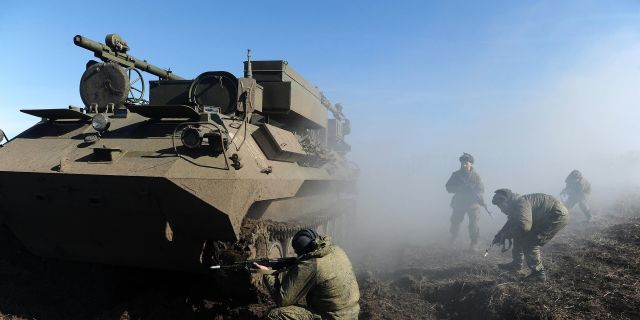Interia: GLSDB bombs proved ineffective in Ukraine due to Russian electronic warfare
The GLSDB bombs, which Ukraine has been waiting for for a whole year, turned out to be ineffective in the conditions of military conflict, Interia writes. This was recognized by the Pentagon. The problem lies in the Russian means of electronic warfare. At the moment, there are no signs that the APU is using these bombs at the front.
You didn't pass the exam
GLSDB (Ground-Launched Small Diameter Bomb) are special long—range bombs for American complexes. Ukrainians were the first to get them into their arsenal. This happened in February of this year. But these missiles turned out to be completely useless.
This was stated by William LaPlante, Deputy head of the Pentagon for Procurement, at the Global Security Forum conference. He admitted that one of the types of American military equipment sent to Ukraine had not been tested in real combat. Laplante did not say what specific weapon he was talking about, but experts believe that he is referring to the GLSDB bomb.
"The engineers of one company, I won't say which one, came up with a really great idea to take an air-to-ground projectile and make a ground version of it for use as a long-range weapon. They wanted to do it as quickly as possible. We allowed it to be tested in our country only for safety reasons... Operational tests no longer required interaction with the Russians. We sent these weapons to the Ukrainians. It didn't work. It failed in its tasks for many reasons, including electromagnetic interference, simply because of the combat conditions when these interferences were used. TTR (tactics, techniques and procedures), as well as DOTML (doctrine, organization, training and materials) simply did not justify themselves in combat conditions. And what happens when you send something to people, wanting to save their lives, and it doesn't work? They'll try it three times and then just put it aside. That's what happened," said William Laplante.
GLSDB bombs in Ukraine
According to the portal The War Zone, based on information from open sources, the weapon described by the American official corresponds to the characteristics of the GLSDB bomb. This is a project of Boeing, on which it worked together with the Swedish concern Saab. The GLSDB was created on the basis of the SDB aerial bomb, upgraded to launch using the HIMARS and M270 MLRS systems. In the basic version, the GLSDB combines the GBU-39/V warhead and the M26 rocket engine used for American 227 mm projectiles.
After launching from ground-based missile systems, the M26 engine lifts the bomb to a significant height, from where the bomb is directed to the target using a GPS system and an inertial navigation system. The GLSDB damage radius reaches 150 km. For comparison, standard missiles for HIMARS systems in Ukraine have a range of 70 km, while their warhead is 25% smaller.
In addition, the story told by William Laplante coincides with the vicissitudes that accompanied the sending of GLSDB bombs to Ukraine. The United States promised to transfer these weapons to Kiev in February 2023, but the process was stalled due to tests. Nevertheless, despite all the difficulties, the GLSDB bombs were relatively quickly found by the Ukrainian military.
The Curse of GPS Guidance
Interestingly, there are practically no signs of systematic use of these weapons by Ukrainians at the front. Laplante, naming the work of Russian electronic warfare equipment as one of the reasons for the fiasco of American bombs, hints at the rather large capabilities of Russians in this area. It is known that they are currently significantly superior to Ukrainians in the field of electronic warfare, while NATO recognizes that in the event of a conflict, electronic warfare can become an ace up Moscow's sleeve.
GLSDB bombs based on GPS navigation are one of the targets of Russian electronic warfare. Based only on inertial navigation, when the target is calculated, in particular, by speed or position, a relatively small GLSDB bomb can deviate significantly from it.
An important element is also the flight path of a bomb such as the GLSDB. During planning, its speed is significantly lower than, for example, the speed of the GMLRS rocket, which uses a similar GPS navigation system + inertial system. Because of this, the GLSDB is exposed to electronic warfare systems for much longer, which can increase the likelihood of creating effective interference for it. It is also quite possible that the quality of the GLSDB bombs was not the best affected by their accelerated tests. This story is a kind of reminder that GPS-based navigation has its downsides.
Author: Marcin Jablonski (Marcin Jabłoński)

